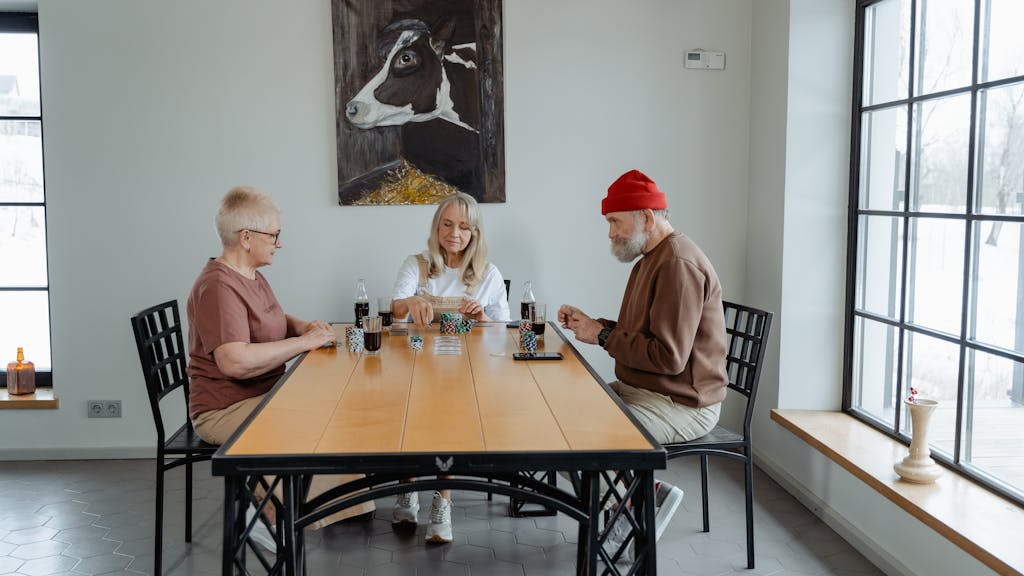Choosing the right retirement community is a significant decision that can greatly impact your quality of life in your later years. Whether you’re looking for a place with social activities, medical care, or simply a peaceful environment to relax, finding a retirement community that aligns with your lifestyle, needs, and preferences is crucial. Here’s how to navigate the process and choose the right one for you or your loved ones.
Assess Your Health and Care Needs
Before selecting a retirement community, it’s important to assess your current health and care needs, as well as what you may need in the future. Some communities focus on independent living with minimal care, while others offer more extensive services, such as assisted living or memory care. If you expect to need help with daily tasks or medical attention as you age, consider a community that offers healthcare services on-site or nearby.
If you or your loved one have specific medical conditions, such as dementia, make sure the community has the appropriate resources and trained staff. For example, memory care units offer specialized programs for individuals with Alzheimer’s or other forms of dementia. Understanding your future needs will help guide your decision toward a community that can offer the right level of support.
Consider Location and Proximity to Family
The location of the retirement community is an essential factor. Many people choose a community that is close to family members or friends for easy visits and support. Consider the community’s proximity to doctors, hospitals, grocery stores, and other essential services. Accessibility to public transportation or private transportation services might also be important if you or a loved one can no longer drive.
If you plan to travel frequently or relocate closer to family members later, check if the community offers flexible options or is situated in a desirable area for future relocation.
Evaluate Amenities and Social Opportunities
Retirement communities often provide a variety of amenities to enhance residents’ comfort and social life. Think about what’s important to you, whether it’s a fitness center, a swimming pool, walking trails, or art and craft spaces. Some communities have on-site libraries, movie theaters, and game rooms, while others provide organized outings or hobby groups.
It’s also important to consider the social atmosphere. Some retirement communities foster a lively, social environment, while others focus on tranquility and privacy. Visit the community and take note of the resident interaction—do they seem engaged, or do they keep to themselves? Consider joining social events or talking to current residents to get a sense of the social life and whether it aligns with your preferences.
Examine the Costs and Contract Terms
The cost of living in a retirement community varies widely depending on the services and amenities provided. Some communities have an all-inclusive fee, while others may charge separately for medical care, meals, or extra services. Be sure to understand all fees upfront, including any potential increases in cost over time.
It’s also crucial to review the contract terms. Some retirement communities require long-term contracts or upfront fees for certain services. Ask about refund policies, payment schedules, and what happens if your health needs change, or if you decide to move out of the community. Make sure to plan for long-term affordability and ensure there are no hidden costs that could become burdensome.
Look into Staff Qualifications and Reputation
The quality of staff in a retirement community is vital for your safety, comfort, and well-being. It’s important to assess the qualifications of the staff, including caregivers, nurses, and administrators. Ask about staff-to-resident ratios to ensure residents receive adequate attention.
Research the reputation of the community, both online and through personal recommendations. Reading reviews from current and former residents or their families can provide valuable insight into the quality of care and the overall living experience. Check if the community is licensed and whether it has been inspected for compliance with state and local regulations.
Visit the Community and Take a Tour
Before making a final decision, it’s essential to visit the retirement communities you’re considering. Touring the facilities allows you to get a firsthand look at the amenities, see how the space feels, and meet staff and residents. Ask questions about daily life, activities, and the overall atmosphere.
Pay attention to cleanliness, maintenance, and security features. Take note of how staff members interact with residents—do they seem attentive and compassionate? If possible, schedule a second visit to get a more in-depth understanding of what living there would be like.
Trust Your Instincts
Ultimately, choosing a retirement community is a personal decision, and it’s essential to trust your instincts when selecting the right place. Your comfort and happiness should be the top priority. If something feels off during your visit or doesn’t meet your needs, keep looking until you find a place that feels like home.
Conclusion
Choosing the right retirement community is a crucial decision that requires careful consideration of your health, lifestyle, financial situation, and personal preferences. By evaluating your needs, visiting communities, and asking the right questions, you can find a retirement community that provides the care, social opportunities, and security necessary for a fulfilling life in your later years. With the right choice, you can enjoy a comfortable, engaging, and supportive environment for many years to come.




